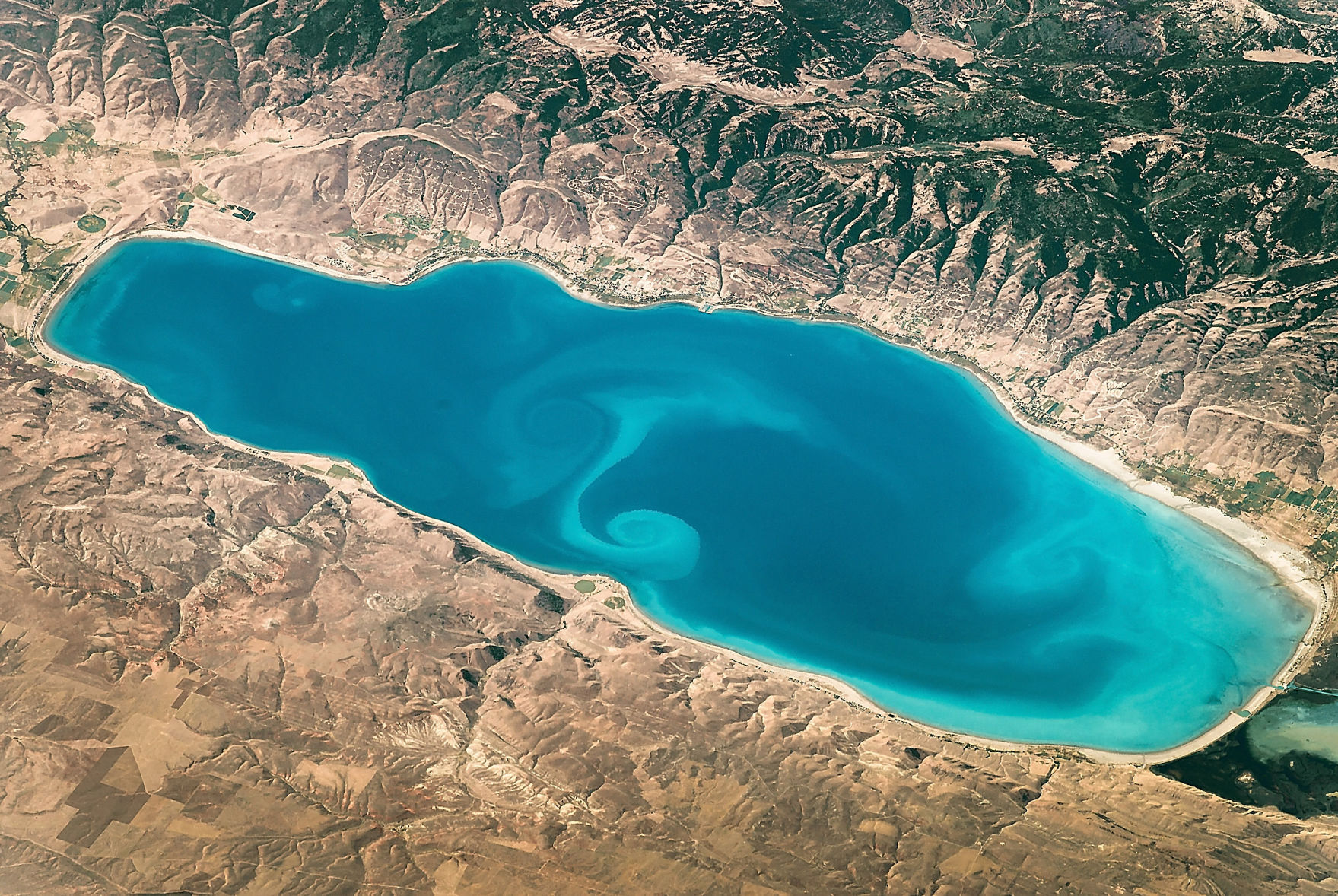Bear Lake catches astronaut's eye

The shimmering turquoise surface of Bear Lake is something most residents in the region are familiar with, but it’s doubtful many have seen the lake quite like it appears in an image from space released this week by NASA.
According to the space agency, the 19-mile-long lake straddling the Utah-Idaho border “caught the eye” of an astronaut on the International Space Station on Sept. 6, and one of the photos taken by the astronaut was featured Dec. 11 as the Image of the Day on the NASA website.
In addition to the bright color of the water, what really stands out in the photo are two large white spirals in the middle of the lake that NASA described as “sediment swirls.” Smaller, less conspicuous spirals are also visible on the north end of the lake.
“The two swirls near the center are rotating in the deepest water — perhaps from outflow from Swan Creek or Fish Haven Creek,” NASA said in a short narrative accompanying the photo. “The more diffuse swirls at the north end of the lake (lower right) likely formed from sediment entering from North Eden Creek. This sediment is carried north along the shoreline by lake currents, joining with sediment eroded from the white beaches.”
Read more:
http://news.hjnews.com/logan_hj/bear-lake-catches-astronaut-s-eye/article_3ca8584a-12a7-5b90-b875-e6d8240295b4.html
